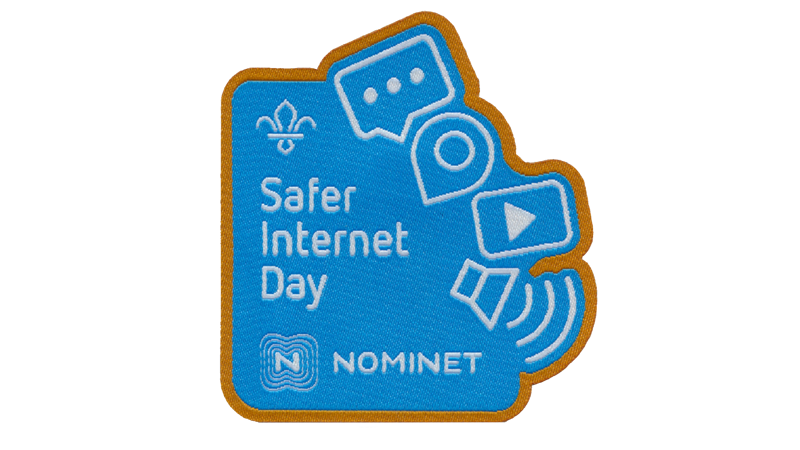
Create a technology timeline
You’ll need
- Device with access to the internet
- A4 paper
- Pens or pencils
- Coloured pens or pencils
- ‘Technology throughout time’ cards
Before you begin
- Use the safety checklist to help you plan and risk assess your activity. Additional help to carry out your risk assessment, including examples can be found here. Don’t forget to make sure all young people and adults involved in the activity know how to take part safely.
- Make sure you’ll have enough adult helpers. You may need some parents and carers to help if you’re short on helpers.
Planning this activity
- Make sure you print enough ‘Technology throughout time’ card sets for your group, they can either do this in teams or pairs. The cards will need to be cut out and mixed up.
- You may want to have a copy of our online safety tips from Staying safe online to be able to share tips with young people or the people they live with.
Running the activity
- Gather everyone in a group and ask what technology people use every day. How have they used technology, the internet or a digital device today? What makes it useful? Are there any problems with it? Do they think it’s accessible to everyone?
- Ask if anyone knows how technology has changed over time. Often things are reinvented to give something more features, make it more compact or lighter, use different materials, make it more user-friendly or to make it more accessible to lots of people.
- Explain that you're all to go time-travelling, using the cards, to see how tech used to be and how they are now.
- Ask everyone to get into small groups or pairs and give each group a set of the ‘Technology throughout time’ cards.
- Ask the groups and pairs to sort the cards into the four categories, which are Computers, Phones, Games, and Music, thinking about which device belongs to each.
- Next, everyone should put the devices in each category from oldest to newest.
- Gather everyone back together and chat through each device. What does it look like? How do you think it works? Do you recognise it or know any facts? How is it different to the other device in the same category?
- Ask everyone why they decided on which device belongs to which category and how they found putting them in age order. Did everyone get the same answers? How did they manage to sort the devices from oldest to newest? Were there any clues? Do you recognise any of the devices and did this help you?
- Now, give everyone a piece of paper. Ask them to draw their favourite device, choosing one from the cards. They should colour them in and decorate them.
- When everyone’s ready, come back together as a group and share these drawings. Ask people why they chose the device they did to draw, what makes it different or unique, and what made it stand out to them.
- Ask everyone to think about what the device will it look like in 20 years. Now, take a new piece of paper and draw what you think it’ll be like. How does it work? What features will it have? Is it inspired by other past, similar devices? Will it be bigger or smaller? What will it be able to do now that it couldn’t do before? What will it be made from? How might it help make people’s lives even easier or better? How will it be help people, be accessible and be safe for the people who use it?
Reflection
This activity was all about technology and how it has changed through time. Can anyone remember any of the older devices? What did they look like? Do you think they’d be useful or practical? What did you like about them? What did you dislike about them? How did they compare to newer versions? Which did you prefer and why?
Technology and different devices often make life easier for us or solve a problem. Did all the devices do this? Which ones had the most benefits or would be the most useful and why? Which ones do you think would create difficulties or be less accessible or practical?
Technology is always changing. Why do you think technology evolves and changes? Think of a device, such as one you use every day or one we talked about. For example, what’s your favourite device you currently use? What would you like to happen to it next? How could it be made better, easier to use or more practical?
Safety
All activities must be safely managed. You must complete a thorough risk assessment and take appropriate steps to reduce risk. Use the safety checklist to help you plan and risk assess your activity. Always get approval for the activity, and have suitable supervision and an InTouch process.
- To make this activity easier, make sure there is an adult volunteer or young leader to support each group.
- To make this activity harder, only show people the card titles, meaning young people need to drawing the matching piece of technology.
- People can be creative in lots of different ways. Instead of drawing, they might write words, creating a collage, glue down photos or use stickers. They could also work with a teammate, who could draw on behalf of the team.
- Some people may need large print copies of the cards, such as if they have a visual impairment. You could make the cards larger and use light coloured paper, such as white, to make them easier to read.
- Remember, not all young people will have the same experience, access or knowledge when it comes to technology. Each person’s grownups may also have different rules around their young person’s use of technology. Make sure to check that everyone understands what everything means and what everything is.
- This activity might involve lots of sitting and listening. Make sure to take movement breaks in between the questions and let people sit how they feel most comfortable, including lying down.
All Scout activities should be inclusive and accessible.
You could ask young people to talk to their family and friends on what technology they used and how it has changed over time. Take a look at our digital safety advice for young people and our other online safety activities with Nominet.
People come up with their own devices to add to the categories or card. They could also share any facts they know about any of the different devices.

